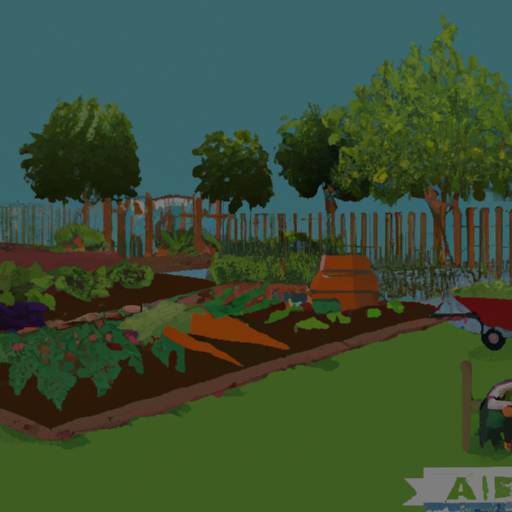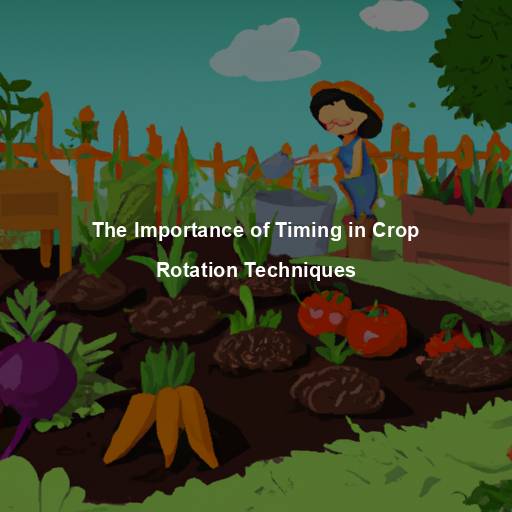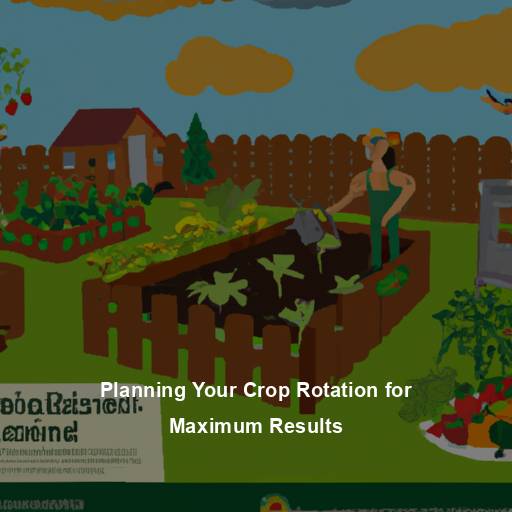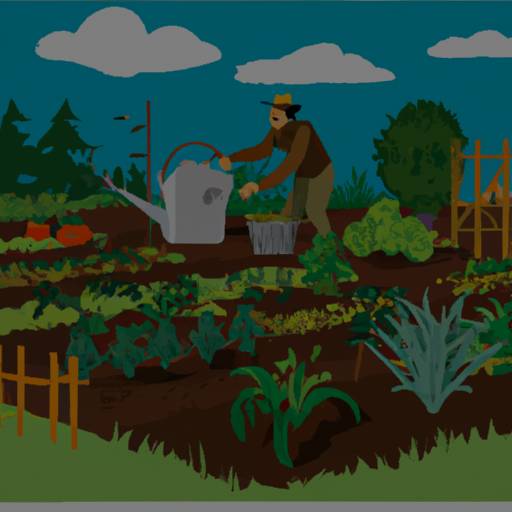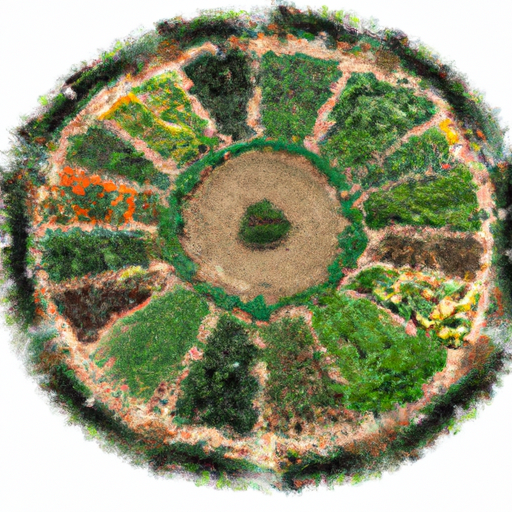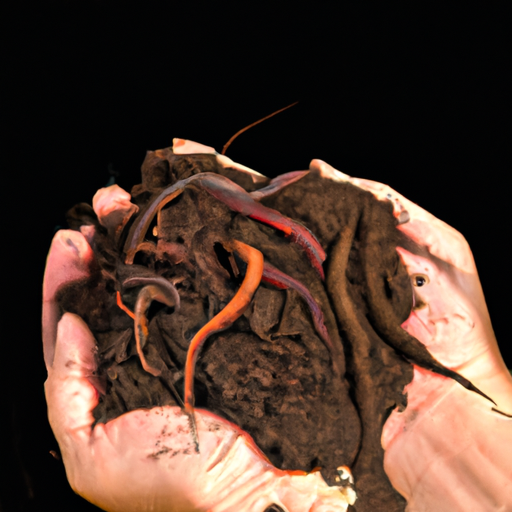Hello, fellow gardeners! As Master Gardeners, we know that water is a precious resource and conserving it is essential.
One of the biggest ways to conserve water in your garden is by properly managing your irrigation system. Firstly, understanding how much water your plants need based on their type and stage of growth is crucial. Overwatering not only wastes this valuable resource but can also harm your plants.
Secondly, knowing when and how long to run your irrigation system can further reduce water waste. By adjusting the frequency and duration of watering sessions to match seasonal weather patterns, you can ensure healthy plant growth while minimizing water usage.
Join me as we dive into the world of water conservation and explore how to optimize our irrigation systems for maximum efficiency!
The Importance Of Water Conservation In Gardening
As a Master Gardener, it’s important to understand the significance of water conservation in gardening.
Not only does conserving water help preserve our natural resources for future generations, but it can also save you money on your water bill.
One great way to conserve water is through rainwater harvesting, which involves collecting and storing rainwater from your roof or other surfaces.
Another effective method is by incorporating drought resistant landscaping into your garden design.
By choosing plants that require less watering and using mulch to retain moisture in the soil, you can significantly reduce the amount of water needed for your garden.
It’s crucial to remember that every drop counts when it comes to conserving water, so always be mindful of how much you’re using and find ways to minimize waste.
Understanding Your Plants’ Water Needs
Properly understanding your plants’ water needs is crucial to maintaining a healthy garden. Plant hydration levels can vary depending on the type of plant, soil conditions, and weather patterns. Soil moisture management plays an integral role in ensuring that your plants receive the right amount of water they need for optimal growth.
Here are four things to keep in mind when it comes to watering your plants:
1) Research your specific plant’s needs before planting;
2) Monitor soil moisture regularly by sticking your finger into the soil about two inches down;
3) Water deeply but infrequently to encourage root growth; and
4) Consider using mulch to retain moisture in the soil.
By taking these steps and paying close attention to your plants’ hydration levels, you’ll be able to prevent over or under-watering which can result in stunted growth or even death of your beloved plants. As a Master Gardener, I highly recommend making sure you have a solid grasp on how much water each plant requires so that you can provide them with what they need to thrive.
Maximizing Irrigation Efficiency
To maximize the efficiency of your irrigation system, consider incorporating smart technology into your setup. These innovative tools can help you conserve water and save money on your utility bills by monitoring soil moisture levels and adjusting watering schedules accordingly. By installing a smart controller or sensor, you can ensure that your plants receive the precise amount of water they need without any waste. In addition to using technology, it’s also important to regularly check for leaks in your system and adjust sprinkler heads to prevent overspray onto sidewalks or other non-vegetated areas. When determining how long to run your irrigation system, be sure to take into account factors such as weather conditions and plant types. Refer to the table below for general guidelines on recommended watering times based on different soil types.
| Soil Type | Watering Time |
|———–|—————|
| Sandy | 10-15 minutes per cycle |
| Loamy | 15-20 minutes per cycle |
| Clay | 20-30 minutes per cycle |
By implementing these strategies, you can make the most out of your irrigation system while reducing water waste and promoting healthy plant growth. Remember: maximizing efficiency is key when it comes to effective water conservation practices!
Tips For Adjusting Your Irrigation System
As a Master Gardener, it’s important to make sure your irrigation system is properly adjusted for water conservation.
Seasonal adjustments are key – in the summer months, you’ll likely need more water due to higher temperatures and increased evaporation rates.
In the winter months, you can cut back on watering since plants require less moisture during this time.
Smart controllers are another great tool for adjusting your irrigation system.
These devices use weather data to determine when and how much to water, taking into account factors like rain levels and humidity.
By making these simple adjustments, you can conserve water while still keeping your garden healthy and thriving all year long.
Monitoring Your Water Usage And Savings
To truly understand water conservation and the impact of your irrigation system on it, you need to monitor your water usage.
Water usage tracking is crucial in identifying areas where you can implement water saving techniques.
You should start by checking your monthly water bill and analyzing how much water you use each month. This will help you determine if there are any spikes or unusual patterns in your water consumption that need to be addressed.
Additionally, consider investing in a smart meter or moisture sensor technology to track real-time data on your irrigation system’s water usage.
By keeping an eye on these metrics, you’ll be able to make informed decisions about when, where, and how much water to apply to achieve optimal plant growth while reducing overall waste.
Remember, every drop counts!
Frequently Asked Questions
What Are The Different Types Of Irrigation Systems Available For Homeowners?
As a Master Gardener, it’s important to understand the different types of irrigation systems available for homeowners.
When considering water conservation and drought prone areas, drip irrigation is often the most efficient choice. Unlike sprinkler systems that can waste water through overspray or evaporation, drip irrigation delivers water directly to plant roots in small, controlled amounts. This not only conserves water but also reduces weed growth and disease spread.
However, if you have larger plants or lawns with high watering needs, sprinkler systems may be necessary. Just make sure to choose models with adjustable heads and timers to prevent overwatering and runoff.
By understanding the pros and cons of each system, you’ll be able to select the best one for your specific garden needs while still prioritizing sustainability.
How Can I Calculate The Amount Of Water My Plants Need?
To properly calculate the amount of water your plants need, it’s important to consider factors such as soil moisture levels and your watering schedule.
One way to determine this is by using a simple method called the finger test – stick your index finger into the soil about two inches deep and if it feels dry, it’s time to water.
Another helpful tool is a soil moisture meter that can give you more accurate readings.
It’s also important to take note of the type of plant and its specific watering needs.
By being mindful of these factors, you’ll be able to create an effective watering plan for your garden while conserving water in the process.
Are There Any Government Incentives Or Rebates For Installing Water-Efficient Irrigation Systems?
As a Master Gardener, I always encourage my clients to consider water conservation when designing their irrigation system.
Did you know that there are government incentives and rebates available for installing water-efficient systems?
It’s like getting rewarded for doing the right thing!
Not only will you save money on your water bill, but you’ll also be helping to conserve this precious resource.
So why not take advantage of these programs and upgrade your system today?
Your wallet (and garden) will thank you in the long run.
How Can I Prevent Water Runoff And Ensure That My Irrigation System Is Not Wasting Water?
To prevent water runoff and ensure that your irrigation system is not wasting water, consider implementing rainwater harvesting and drip irrigation techniques.
These methods allow for efficient use of water by collecting and storing it for later use, as well as delivering it directly to the roots of plants in a slow and steady manner.
By using these practices, you can reduce the amount of water lost to evaporation or overspray, while also promoting healthy plant growth.
Additionally, check regularly for leaks or damaged components in your irrigation system to further minimize waste.
Remember, saving water not only benefits your garden but also contributes to overall conservation efforts.
What Are Some Common Mistakes That Homeowners Make When It Comes To Watering Their Plants And Using Irrigation Systems?
As a Master Gardener, I’ve seen homeowners make some common mistakes when it comes to watering their plants and using irrigation systems.
One issue is not understanding plant hydration needs and soil moisture levels. It’s important to know the type of plants you have and how much water they require to thrive.
Another mistake is not following proper watering schedules, which can lead to over-watering or under-watering your plants. This can be detrimental to their growth and drought resistance in the long run.
By taking the time to understand these factors, homeowners can ensure that their irrigation system is being used effectively for optimal plant health and water conservation efforts.
Conclusion
In conclusion, understanding water conservation and your irrigation system can help you save money on your water bill while also benefiting the environment.
Did you know that according to a study by the University of Florida, up to 50% of outdoor water use is wasted due to inefficient watering practices? This means that half of the precious resource we use for our lawns and gardens could be saved with proper irrigation techniques.
As a Master Gardener, I encourage all homeowners to take the time to research their options when it comes to irrigation systems and educate themselves on how much water their plants actually need.
By doing so, not only will you be conserving water, but you’ll also ensure that your plants are getting the right amount of moisture they require to thrive. Remember, every drop counts!
